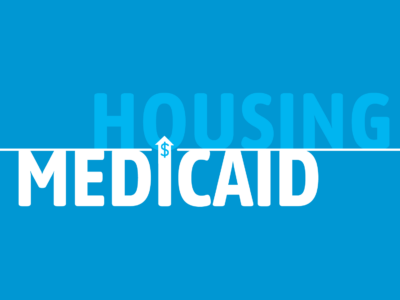Our Aim
By 2026, key data, governance, and accountability challenges will have been solved, creating the conditions for any community to end homelessness. Across the country, communities will have comprehensive, real-time, person-specific data that enables them to accelerate housing placements, make targeted system improvements, and drive reductions in overall homelessness.
Progress
By-name data allows communities to measure homelessness in real time to make data-driven decisions, prioritize resources, and connect their neighbors to a home.
A commitment to data is more than a commitment to numbers. It is about being accountable to all people experiencing homelessness and their community.
As of the end of 2023, 71 communities had achieved quality by-name data standards for at least one population.
This means communities know every veteran, every person experiencing chronic homelessness, every homeless youth, or every person — whether living on the street or in a shelter — by name and on the path to a home.
This comprehensive picture of homelessness provides communities with a radically new understanding of homelessness. They can see the dynamics of homelessness over time and whether their efforts are actually reducing homelessness. They can identify disparities in outcomes and test new approaches to close these disparities. They can understand trends and bottlenecks in the housing process and spot opportunities to speed up the process of reconnecting people with a home. They can pinpoint where to intervene to have the greatest impact and where new investments will have the most beneficial effect in reducing overall homelessness.
And it’s working. Implementation of real-time, by-name data systems among communities has successfully improved real-world outcomes and reduced homelessness among target populations. As a result of data system improvements, individuals are spending less time homeless and gaining access to permanent homes more quickly.
In fact, the time it takes to house individuals on a community’s by-name list has been cut in half in several communities. Other communities have achieved a meaningful increase in access to supportive resources as a result of improved data. Communities actively collecting feedback from those they serve reported improvement in the ease of navigating housing assistance and other supportive resources.
High-quality, shared data makes these outcomes possible, allowing communities to detect and resolve barriers to moving individuals toward homes. Resources and priorities can be continuously assessed and adjusted to accelerate housing placements, prevent new inflow into homelessness, correct racial and other disparities, and seize opportunities for system-level improvement.
Community Solutions’ Built for Zero team works closely with communities to build the team and structure they’ll need to reduce homelessness. This includes forming a governance structure for the team, coaching to develop technical capabilities, and helping to align practices between key organizations and government agencies to achieve quality data on homelessness. We help to establish a “data culture” and the appropriate data-sharing agreements across all partner organizations to enable collective accountability for reducing homelessness. Quality data also supports more effective outreach, case conferencing, and resource sharing, leading to improved services to each individual and reducing homelessness overall.
The transformation of case conferencing illustrates the power of a data-driven, collective approach. These meetings bring multiple homeless service providers together to address the specific barriers to housing facing each individual on the community’s by-name list. Working from the by-name list they have created, attendees review the steps needed to assist specific individuals out of homelessness — and which organization is accountable for completing that action. Staff participating in this process report that it is not only more effective to work in this coordinated way across organizations, but also “key in humanizing the work and making it feel more urgent.”
Communities are using feedback from people experiencing homelessness to inform system changes. Who can better identify when and why a community’s efforts to reduce homelessness are failing than individuals experiencing homelessness? Built for Zero communities now routinely engage people experiencing homelessness in the work of improving their system. Surveys and focus groups of those in the process of overcoming homelessness provide local teams with critical feedback for system improvement.

In places like Gulf Coast, Mississippi, a youth advisory board informs and guides their work to solve youth homelessness. Several communities have created dedicated roles for those with lived experience of homelessness to inform their services and ways to achieve racially equitable outcomes. These insights are leading to more streamlined processes and reduced administrative burden for individuals experiencing homelessness and for frontline staff (such as minimizing duplicated efforts or having to provide the same information to multiple agencies), along with improved results and experiences that are more respectful and positive for all involved.
Communities are now using quality data to deploy their resources and investments more strategically. Standardized assessment tools — including data on the length of time someone has been homeless, disabilities, income sources, and frequency of contact with various service-providing organizations — allow communities to identify “highest-need” cases. This in turn makes it possible to respond quickly to real-time changes in individual circumstances, such as deteriorating health. An increasing number of communities also integrate personal demographics into their assessments to help mitigate the risk of unequal access to resources. These standardized approaches help communities eliminate guesswork and make more informed and timely decisions on how to focus the efforts of their team and set priorities for the use of resources.
A particularly valuable tool for system coordination and decision making is data visualization. Community Solutions collaborates with the Tableau Foundation to provide customized visualization tools and training for community teams, which enables them to track and display the real-time inflow and outflow dynamics of homelessness and to mine their data for patterns, emerging issues, and opportunities for system improvements. Communities use these visualization tools to pinpoint where and why individuals are “trapped” in the system while others successfully move forward to stable housing.
Visualization tools also help community teams educate policymakers, elected officials, and, in some cases, the general public, by allowing data to be presented in easy-to-understand formats, even for those without expertise in the subject.
Challenges and Learnings
Data sharing is a challenge.
A maze of different data systems are used by the various organizations that interact with people experiencing homelessness. Each nonprofit, local government, health care institution, state agency, and law enforcement body has its own data system and way of identifying the same individual. Aggregating and safely sharing data across the organizations that must work together to reduce homelessness presents a significant challenge. Some organizations are reluctant to share data due to uncertainties around liability and confidentiality or because of limited capacity or the fees charged by software vendors to run reports or enable links between different systems. There are also different and occasionally conflicting rules around data usage among organizations, including between federal agencies such as HUD and Medicaid. Furthermore, smaller organizations may not have the staffing or technical know-how to collect and store reliable data.
The answer is action by federal and state agencies to modernize and align the data standards and policies affecting homelessness, and to support the technical and human infrastructure communities need to coordinate their efforts, optimize their resources, and assure equitable outcomes. This is a top policy focus for Community Solutions.
Communities need affordable, effective technology options that make the work of reducing homelessness easier, not harder.
Legacy technology creates a challenge.
All communities are required to use HUD-mandated software called the Homeless Management Information System (HMIS). Three vendors control most of the market. The HMIS measures compliance with HUD-funded programs but is not designed to enable system management or effectiveness. It does not provide interoperability with other systems, such as health care, or provide the reports communities need to track the population-level dynamics of inflow and outflow that tell a community whether their efforts are succeeding. Accessing this critical information requires elaborate workarounds that place a significant burden on community teams with limited staffing.
Communities need affordable, effective technology options that make the work of reducing homelessness easier, not harder.
Ongoing data improvements will require more staff and more training.
Adding system coordination staff is ostensibly within a community’s control, but securing funding for these roles has been challenging. Government and philanthropy typically fund direct services staff, not the system coordination roles that make communities’ overall housing and homeless response systems operate effectively. Community Solutions is educating funders on the critical nature of these positions, and developing workforce support and training opportunities for those in these roles, informed by the requests and aspirations of Built for Zero community teams.
To assist with the recruitment, training, and retention of key system leadership staff, we are curating existing professional training offerings in data analytics, quality improvement, and other system-coordination capabilities and creating new system leader career pathways and professional development supports. A number of valuable resources have been developed in other sectors.
In 2023, Community Solutions made staffing and training investments in 35 communities, supporting 37 new system-level positions.
Read more from our 2023 Impact and Learning Report

The future we can build together

Our path toward a tipping point

Helping communities solve homelessness

Supporting equitable homeless response systems

Solving key data and collaboration challenges






